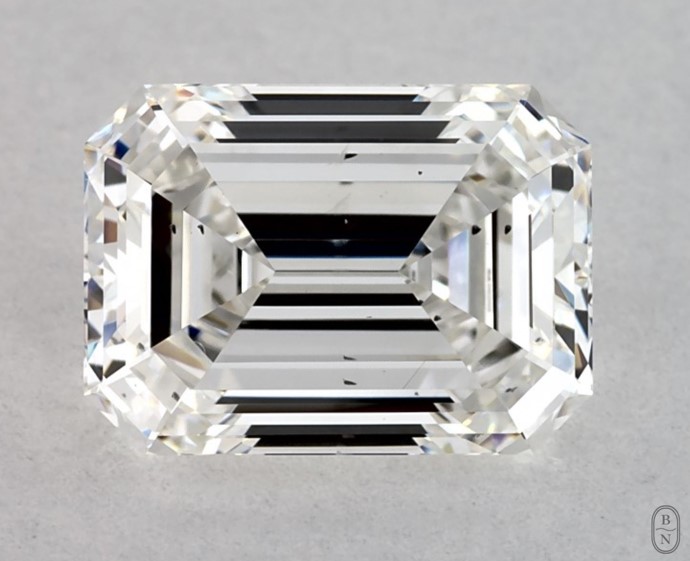What Is the Best Clarity for a 2 Carat Diamond?
2 Minute Read
Clarity is an important consideration for a two carat diamond because, regardless of the shape, its table facet is large enough to allow you to see its interior easily. For an eye-clean two carat diamond, the best clarity grade is in the VS range or above. Let's break it down and learn how to get the best value for this clarity range.
What is Diamond Clarity?
Clarity refers to the presence, or lack thereof, of features contained within a diamond.
What Internal Features Might Be In a Diamond
There are actually quite a few things that can exist inside a diamond. Often, growing environments contain non-carbon elements which the gem will swallow as it expands. It is also possible that some carbon isn't converted to diamond and instead exists as dark graphite particles. Stones may also have small fractures. All of these factors and more are collectively called "inclusions".
How to Assess Clarity
When evaluating the impact that inclusions have on clarity, gemologists look at five factors: size, number, location, relief, and nature. With all of this considered, diamonds are graded on a scale. From best to worst, the grades are Flawless (F) and Internally Flawless (IF), Very Very Slightly Included (VVS1, VVS2), Very Slightly Included (VS1, VS2), Slightly Included (SI1, SI2), and Included (I1, I2, and I3). The diamond grading report that comes with your purchase will include the clarity grade.
What is the Best Clarity?
When choosing which clarity grade you want your diamond to have, a phrase to keep in mind is "eye-clean". This describes diamonds whose inclusions are so small that you can't see them without magnification. With few exceptions, diamonds that are VS2 or better are eye-clean while SI1 and lower stones will have features that you can see. That means that diamonds with grades Flawless through VS2 all look the same, but gems with higher grades cost more. Therefore, the best value for an eye-clean 2 carat diamond will be one with a clarity grade in the VS range. If you are on a tight budget and don't mind a few, hard-to-see spots, an SI1 or SI2 gem may be the stone for you!
You will find that there is variation within categories. Both of these gems are SI2 and are valued similarly, but the stone on the left has a few dark specks while the gem on the right has one big lightly-colored spot in the middle.
Emily Frontiere
Emily Frontiere is a GIA Graduate Gemologist. She is particularly experienced working with estate/antique jewelry.
Related Articles
How to Try On Engagement Rings Before Buying Online
2025 Buying Guide: How to Select, Wear, and Buy Cufflinks
Should I Buy a VVS2 Clarity Diamond?
Diamond Tennis Bracelets: A Buying Guide
Latest Articles
Quartz Toxicity: Understanding the Risks for Jewelers and Wearers
Synthetic Amethyst: What is it and How is it Made?
Hambergite Value, Price, and Jewelry Information
Pearl Simulants: How to Spot Faux Pearls
Never Stop Learning
When you join the IGS community, you get trusted diamond & gemstone information when you need it.
Get Gemology Insights
Get started with the International Gem Society’s free guide to gemstone identification. Join our weekly newsletter & get a free copy of the Gem ID Checklist!
